Föstudagur, 20. mars 2009
Gleđilegt nýtt ár!
„Bíddu? Er ekki svolítiđ seint ađ óska okkur ţess?" hugsa án efa einhverjir. En ekki fyrir mig. Í kvöld, 20. mars kl. 18:00 hefst bahá'í nýáriđ, Naw-Rúz. Bahá'íar um allan heim halda ţennan dag hátíđlegan en hann markar jafnframt lok 19 daga föstumánađarins 'alá (upphafning). Bahá'íar á höfuđborgarsvćđinu munu koma saman á morgun, 21. mars kl. 14:00 í Haukahúsinu í Hafnarfirđi og vera međ helgistund og samveru.
Ţađ vill svo til ađ á ţessu Herrans ári 166 sem nú hefst verđa liđin 100 ár frá ţví ađ jarđneskar leyfar Bábsins, annars tveggja opinberenda bahá'í trúarinnar, voru lagđar til hvílu í viđeigandi grafhýsi á Karmelfjalli í Haifa, Ísrael eftir ađ hafa veriđ fluttar međ leynd alla leiđ frá Íran. Ţađ var Abdu'l-Bahá, sem ţá stýrđi málefnum bahá'í samfélagsins á ţeim tíma, sem kom ţeim ţar fyrir eftir ađ hafa byggt ţar byggingu til ađ hýsa ţćr.
Ţađ má lesa nánar um ţá athöfn í bókinni God Passes By eftir Shoghi Effendi. Ég var djúpt snortinn ţegar ég las ţessa lýsingu á sínum tíma. Ég birti hana ţví hér fyrir ţá sem nenna og hafa tök á ađ lesa svo langan útdrátt:
CHAPTER XVIII
Entombment of the Báb's Remains on Mt. Carmel
'Abdu'l-Bahá's unexpected and dramatic release from His forty-year confinement ... enabled Him to achieve one of the most signal acts of His ministry: the removal of the Báb's remains from their place of concealment in Tihran to Mt. Carmel. He Himself testified, on more than one occasion, that the safe transfer of these remains, the construction of a befitting mausoleum to receive them, and their final interment with His own hands in their permanent resting-place constituted one of the three principal objectives which, ever since the inception of His mission, He had conceived it His paramount duty to achieve. This act indeed deserves to rank as one of the outstanding events in the first Bahá'í century.
As observed in a previous chapter the mangled bodies of the Bab and His fellow-martyr, Mirza Muhammad-'Ali, were removed, in the middle of the second night following their execution, through the pious intervention of Haji Sulayman Khan, from the edge of the moat where they had been cast to a silk factory owned by one of the believers of Milán, and were laid the next day in a wooden casket, and thence carried to a place of safety. Subsequently, according to Bahá'u'lláh's instructions, they were transported to Tihran and placed in the shrine of Imam-Zadih Hasan. They were later removed to the residence of Haji Sulayman Khan himself in the Sar-Chashmih quarter of the city, and from his house were taken to the shrine of Imam-Zadih Ma'sum, where they remained concealed until the year 1284 A.H. (1867-1868), when a Tablet, revealed by Bahá'u'lláh in Adrianople, directed Mulla Ali-Akbar-i-Shahmirzadi and Jamal-i-Burujirdi to transfer them without delay to some other spot, an instruction which, in view of the subsequent reconstruction of that shrine, proved to have been providential.
Unable to find a suitable place in the suburb of Shah Abdu'l-'Azim, Mulla Ali-Akbar and his companion continued their search until, on the road leading to Chashmih-'Ali, they came upon the abandoned and dilapidated Masjid-i-Masha'u'llah, where they deposited, within one of its walls, after dark, their precious burden, having first re-wrapt the remains in a silken shroud brought by them for that purpose. Finding the next day to their consternation that the hiding-place had been discovered, they clandestinely carried the casket through the gate of the capital direct to the house of Mirza Hasan-i-Vazir, a believer and son-in-law of Haji Mirza Siyyid Aliy-i-Tafrishi, the Majdu'l-Ashraf, where it remained for no less than fourteen months. The long-guarded secret of its whereabouts becoming known to the believers, they began to visit the house in such numbers that a communication had to be addressed by Mulla Ali-Akbar to Bahá'u'lláh, begging for guidance in the matter. Haji Shah Muhammad-i-Manshadi, surnamed Aminu'l-Bayan, was accordingly commissioned to receive the Trust from him, and bidden to exercise the utmost secrecy as to its disposal.
Assisted by another believer, Haji Shah Muhammad buried the casket beneath the floor of the inner sanctuary of the shrine of Imam-Zadih Zayd, where it lay undetected until Mirza Asadu'llah-i-Isfahani was informed of its exact location through a chart forwarded to him by Bahá'u'lláh. Instructed by Bahá'u'lláh to conceal it elsewhere, he first removed the remains to his own house in Tihran, after which they were deposited in several other localities such as the house of Husayn-'Aliy-i-Isfahani and that of Muhammad-Karim-i-'Attar, where they remained hidden until the year 1316 (1899) A.H., when, in pursuance of directions issued by 'Abdu'l-Bahá, this same Mirza Asadu'llah, together with a number of other believers, transported them by way of Isfahan, Kirmanshah, Baghdad and Damascus, to Beirut and thence by sea to 'Akká, arriving at their destination on the 19th of the month of Ramadan 1316 A.H. (January 31, 1899), fifty lunar years after the Báb's execution in Tabriz.
In the same year that this precious Trust reached the shores of the Holy Land and was delivered into the hands of 'Abdu'l-Bahá, He, accompanied by Dr. Ibrahim Khayru'llah, whom He had already honored with the titles of "Baha's Peter," "The Second Columbus" and "Conqueror of America," drove to the recently purchased site which had been blessed and selected by Bahá'u'lláh on Mt. Carmel, and there laid, with His own hands, the foundation-stone of the edifice, the construction of which He, a few months later, was to commence. About that same time, the marble sarcophagus, designed to receive the body of the Bab, an offering of love from the Bahá'ís of Rangoon, had, at 'Abdu'l-Bahá's suggestion, been completed and shipped to Haifa.
No need to dwell on the manifold problems and preoccupations which, for almost a decade, continued to beset 'Abdu'l-Bahá until the victorious hour when He was able to bring to a final consummation the historic task entrusted to Him by His Father. The risks and perils with which Bahá'u'lláh and later His Son had been confronted in their efforts to insure, during half a century, the protection of those remains were but a prelude to the grave dangers which, at a later period, the Center of the Covenant Himself had to face in the course of the construction of the edifice designed to receive them, and indeed until the hour of His final release from His incarceration.
The long-drawn out negotiations with the shrewd and calculating owner of the building-site of the holy Edifice, who, under the influence of the Covenant-breakers, refused for a long time to sell; the exorbitant price at first demanded for the opening of a road leading to that site and indispensable to the work of construction; the interminable objections raised by officials, high and low, whose easily aroused suspicions had to be allayed by repeated explanations and assurances given by 'Abdu'l-Bahá Himself; the dangerous situation created by the monstrous accusations brought by Mirza Muhammad-'Ali and his associates regarding the character and purpose of that building; the delays and complications caused by 'Abdu'l-Bahá's prolonged and enforced absence from Haifa, and His consequent inability to supervise in person the vast undertaking He had initiated -- all these were among the principal obstacles which He, at so critical a period in His ministry, had to face and surmount ere He could execute in its entirety the Plan, the outline of which Bahá'u'lláh had communicated to Him on the occasion of one of His visits to Mt. Carmel.
"Every stone of that building, every stone of the road leading to it," He, many a time was heard to remark, "I have with infinite tears and at tremendous cost, raised and placed in position." "One night," He, according to an eye-witness, once observed, "I was so hemmed in by My anxieties that I had no other recourse than to recite and repeat over and over again a prayer of the Bab which I had in My possession, the recital of which greatly calmed Me. The next morning the owner of the plot himself came to Me, apologized and begged Me to purchase his property."
Finally, in the very year His royal adversary lost his throne, and at the time of the opening of the first American Bahá'í Convention, convened in Chicago for the purpose of creating a permanent national organization for the construction of the Mashriqu'l-Adhkar, 'Abdu'l-Bahá brought His undertaking to a successful conclusion, in spite of the incessant machinations of enemies both within and without. On the 28th of the month of Safar 1327 A.H., the day of the first Naw-Ruz (1909), which He celebrated after His release from His confinement, 'Abdu'l-Bahá had the marble sarcophagus transported with great labor to the vault prepared for it, and in the evening, by the light of a single lamp, He laid within it, with His own hands -- in the presence of believers from the East and from the West and in circumstances at once solemn and moving -- the wooden casket containing the sacred remains of the Bab and His companion.
When all was finished, and the earthly remains of the Martyr-Prophet of Shiraz were, at long last, safely deposited for their everlasting rest in the bosom of God's holy mountain, 'Abdu'l-Bahá, Who had cast aside His turban, removed His shoes and thrown off His cloak, bent low over the still open sarcophagus, His silver hair waving about His head and His face transfigured and luminous, rested His forehead on the border of the wooden casket, and, sobbing aloud, wept with such a weeping that all those who were present wept with Him. That night He could not sleep, so overwhelmed was He with emotion.
"The most joyful tidings is this," He wrote later in a Tablet announcing to His followers the news of this glorious victory, "that the holy, the luminous body of the Bab ... after having for sixty years been transferred from place to place, by reason of the ascendancy of the enemy, and from fear of the malevolent, and having known neither rest nor tranquillity has, through the mercy of the Abha Beauty, been ceremoniously deposited, on the day of Naw-Ruz, within the sacred casket, in the exalted Shrine on Mt. Carmel... By a strange coincidence, on that same day of Naw-Ruz, a cablegram was received from Chicago, announcing that the believers in each of the American centers had elected a delegate and sent to that city ... and definitely decided on the site and construction of the Mashriqu'l-Adhkar."
...
(Shoghi Effendi, God Passes By, p. 277-278)
Meginflokkur: Trúmál | Aukaflokkar: Vinir og fjölskylda, Vísindi og frćđi | Facebook

 Brosveitan - Pétur Reynisson
Brosveitan - Pétur Reynisson
 Börkur Gunnarsson
Börkur Gunnarsson
 Egill Bjarnason
Egill Bjarnason
 Einar Sveinbjörnsson
Einar Sveinbjörnsson
 Fladdi
Fladdi
 Guðsteinn Haukur Barkarson
Guðsteinn Haukur Barkarson
 Hrafnhildur Ýr Vilbertsdóttir
Hrafnhildur Ýr Vilbertsdóttir
 Hrannar Baldursson
Hrannar Baldursson
 Hreiðar Eiríksson
Hreiðar Eiríksson
 Hugrún Jónsdóttir
Hugrún Jónsdóttir
 Kári Harðarson
Kári Harðarson
 Kristín M. Jóhannsdóttir
Kristín M. Jóhannsdóttir
 leyla
leyla
 Mama G
Mama G
 Mofi
Mofi
 Rósa Harðardóttir
Rósa Harðardóttir
 Salvör Kristjana Gissurardóttir
Salvör Kristjana Gissurardóttir
 Sigurður Ingi Ásgeirsson
Sigurður Ingi Ásgeirsson
 Sigurjón Sveinsson
Sigurjón Sveinsson
 Vilberg Helgason
Vilberg Helgason
 Þarfagreinir
Þarfagreinir
 Þór Sigurðsson
Þór Sigurðsson
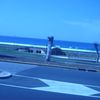
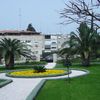
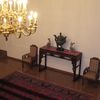
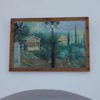
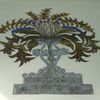
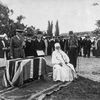
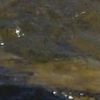
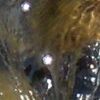


Athugasemdir
Gleđilegt nýtt ár!
Mama G, 21.3.2009 kl. 17:40
Bćta viđ athugasemd [Innskráning]
Ekki er lengur hćgt ađ skrifa athugasemdir viđ fćrsluna, ţar sem tímamörk á athugasemdir eru liđin.